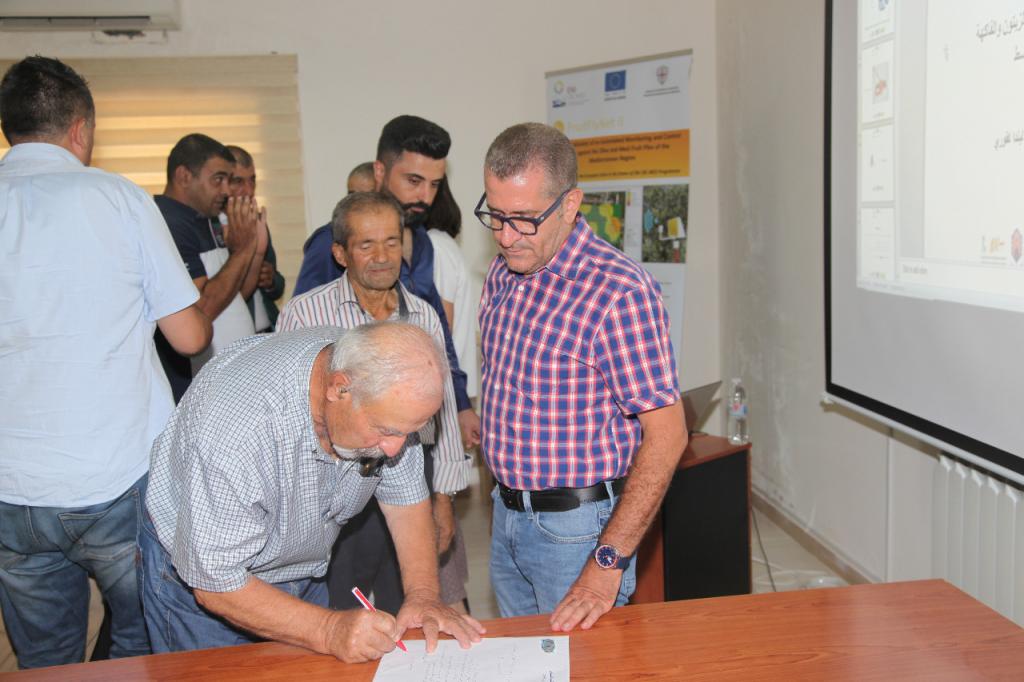FruitFlyNet-ii presented to local stakeholders in Lebanon
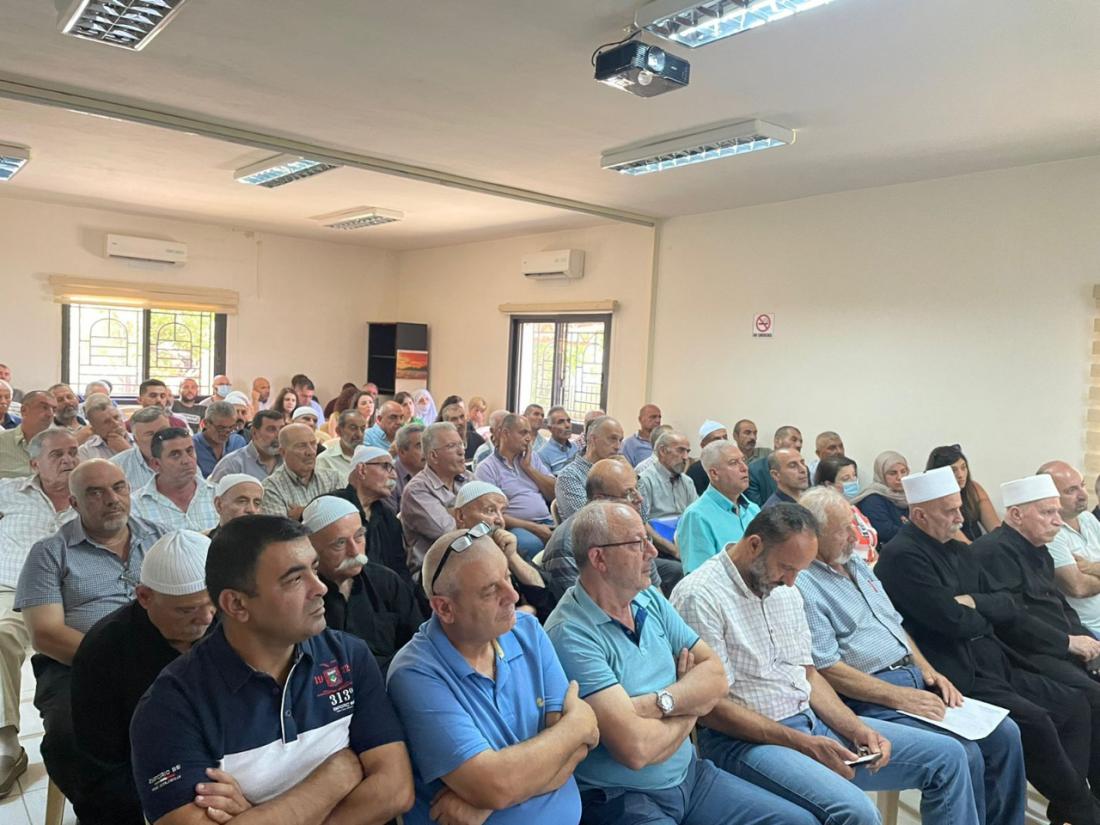
An open dissemination event was held οn 15th July 2022, at the Lebanese Agriculture Research Institute (LARI) in Tal Amara Bekaa, Lebanon, attended by more than 100 persons. Most of them are farmers, agriculture engineers, researchers and specialists in plant protection.

Miss Amira Youssef, head of LARI in Hasbaya station where FruitFlyNet-ii project experimental site is located, welcomed all the attendees . She said “ I am more than grateful to stand here and welcome you all to this event . Today LARI team in Lebanon will be walking you through the launching of the FruitFlyNet-ii project funded by the ENI CBC MED programme”.
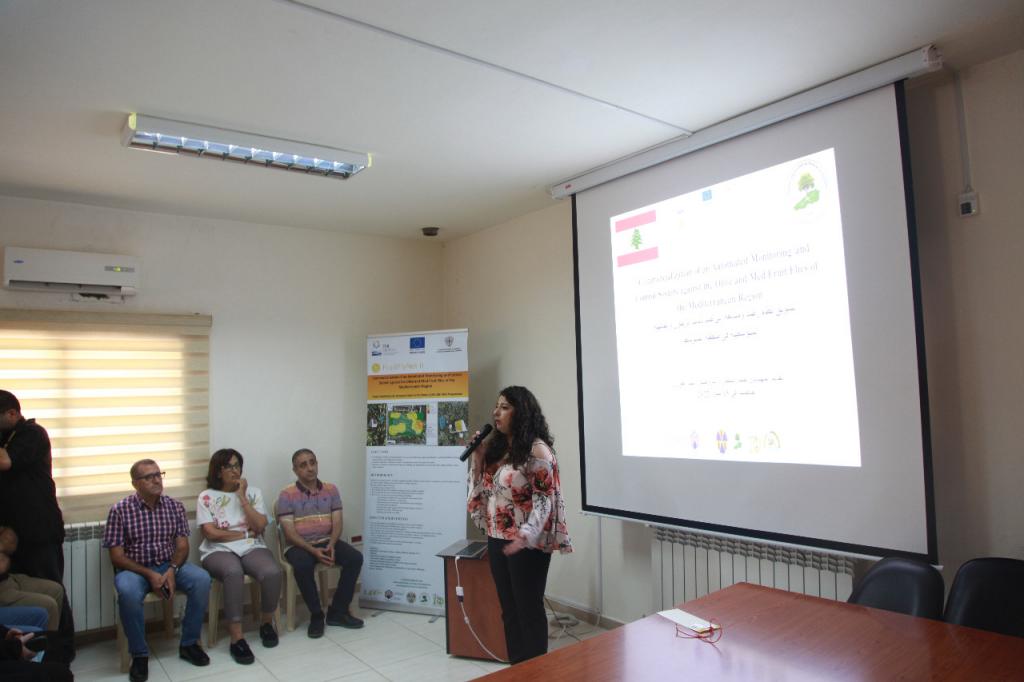
At the beginning of the launching presentation, the national coordinator of the project, Ahmad Bitar, provided a general definition, nominated the participating countries (European and non-European) and talked about the duration of the project.
Mr. Bitar cited the difficulties that delayed the start of the project’s execution in Lebanon. He explained in detail the objectives as well as the methodology of the work during the implementation of the project. A technical presentation has been given concerning the operation and the component parts of the e-traps with illustrative photos.

The national coordinator focused on the beneficiaries of this project: farmers and producers of olive and olive oil are the main beneficiaries in the short term, while the environment, the total olive sector in Lebanon and consequently the Lebanese economy, will be the sustainable beneficiaries in the long term.
The second lecture was delivered by the technical manager, Dr. Linda Kfoury. She exposed in details the life cycle of Bactrocera oleae, the optimum conditions to its development, the provoked damage and the economic importance which this pest represents in the agricultural sector.
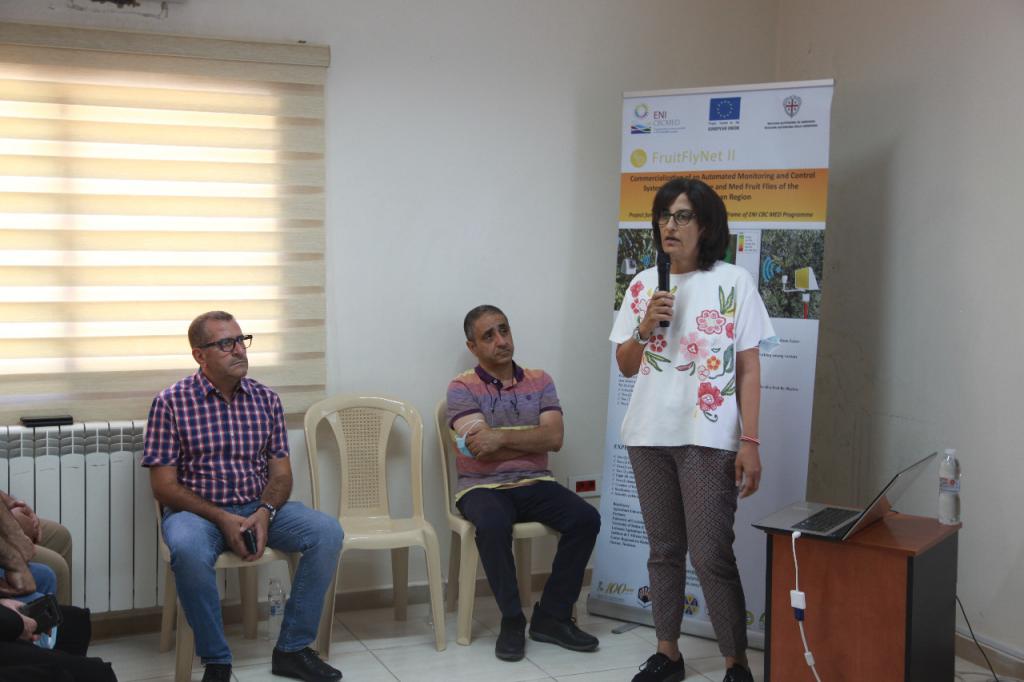
She examined the pest under its all stages to recognize it, the best agricultural practices to take into consideration to manage this pest: by focusing on the fruit load rate, coupled with climatic conditions, in particular, temperature and relative humidity as a management index of the orchard.
She also presented techniques to be preventive with its presence to control it precisely by using traps: particularly, the visual yellow trap which led to use the electronic trap based on yellow visual trap combined with the attractant, ammonium bicarbonate. Dr. Kfoury explained the technique preventing the hazardous use of pesticides, by reducing the pulverization frequency, quantity and dose and by applying Spinosad, environment friendly product, with attractant, as bait spray at the south side of the tree.
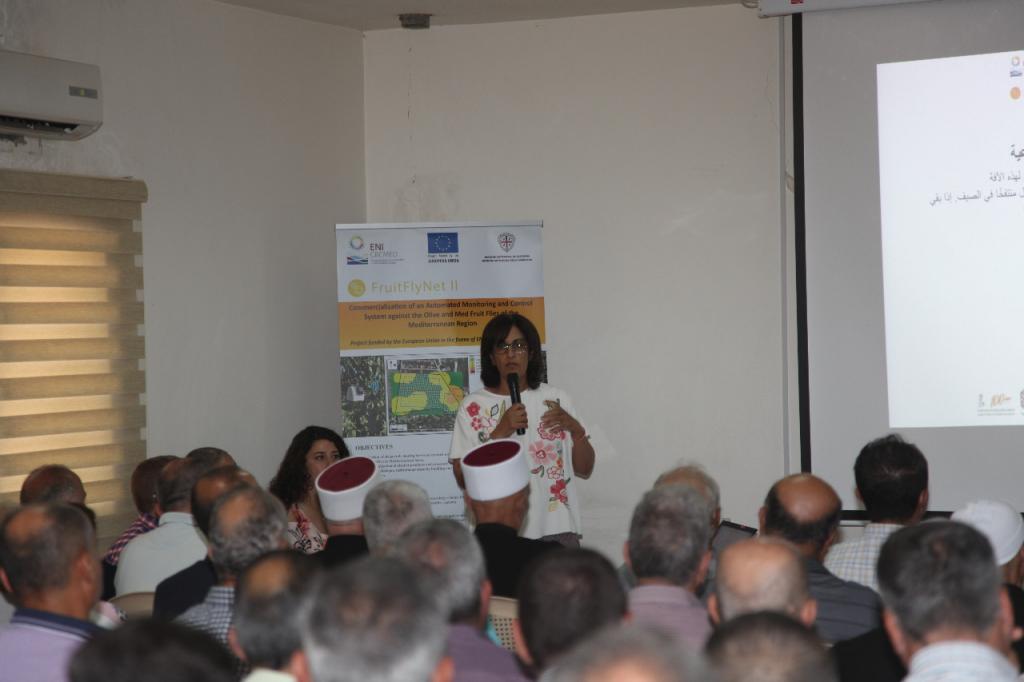
At the end of the presentation there was a fruitful discussion between the project work team and the participants in this event. The main questions asked by the farmers were about the insect and how to fight against it, as well the price and the availability of the e-traps in Lebanon.
